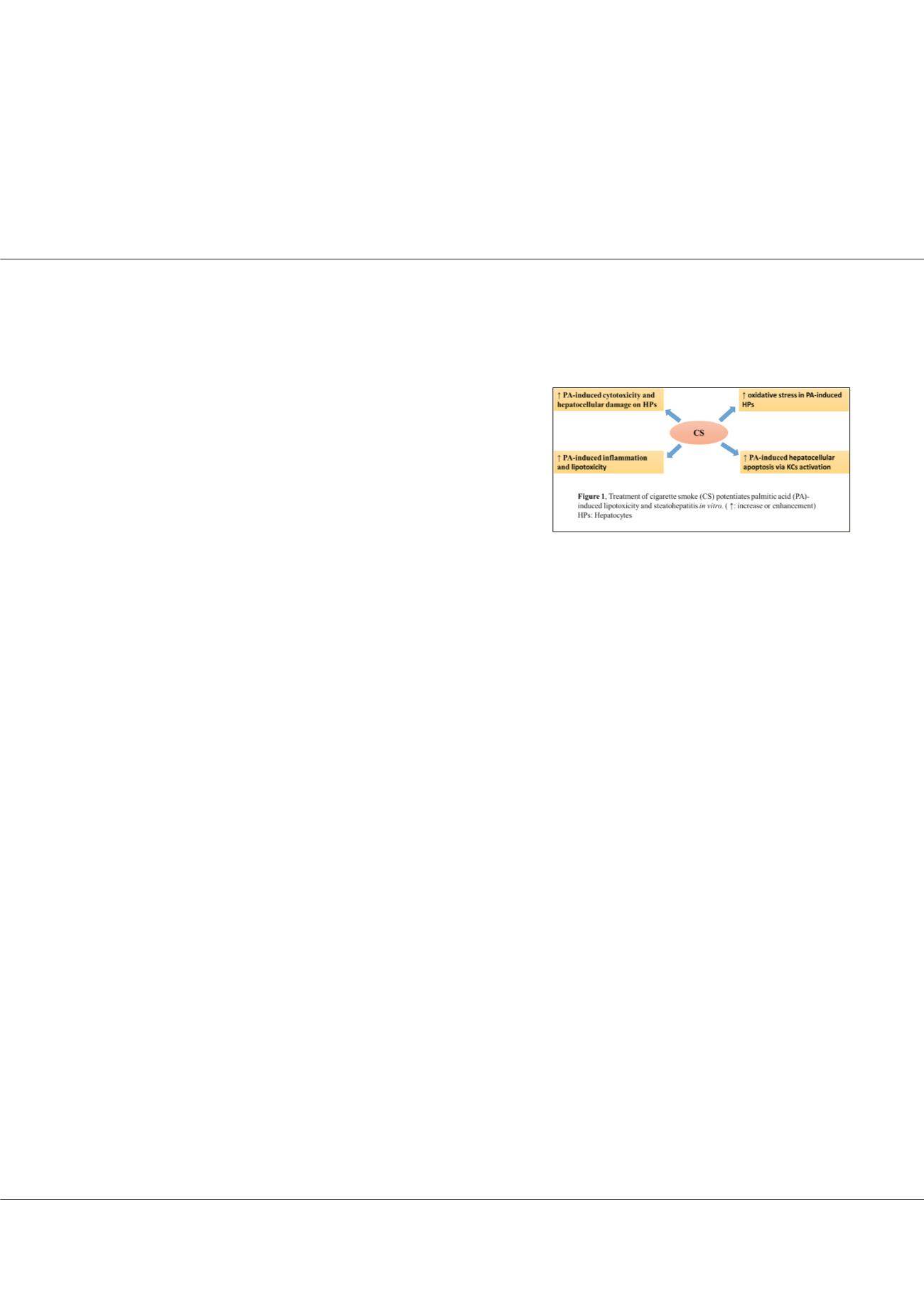

Page 76
Notes:
conferenceseries
.com
Volume 4
Toxicology: Open Access
ISSN: 2476-2067
Toxicology Congress 2018
March 12-14, 2018
March 12-14, 2018 Singapore
14
th
World Congress on
Toxicology and Pharmacology
Treatment of cigarette smoke condensate accelerates nonalcoholic steatohepatitis
in vitro
Zixiong Zhou
1
, Kyuhong Lee
2
and Bumseok Kim
1
1
Chonbuk National University, South Korea
2
Korea Institute of Toxicology, South Korea
I
t has been well known that Cigarette Smoke (CS) is a leading cause of
various diseases worldwide. Recently, cumulative evidence has suggested
that exposure to CS detrimentally affects the pathogenesis of several
chronic liver diseases, including nonalcoholic fatty liver disease (NAFLD).
Nonalcoholic steatohepatitis (NASH), more severe stage of NAFLD, is
characterized by steatosis, hepatocellular ballooning degeneration and
lobular inflammation. Relationship between CS exposure and progression
of NASH has not been fully understood. Therefore, the purpose of this study
was to evaluate the effects of CS extract (CSE) or CS condensate (CSC) on the
in vitro
NASH model using mouse primary
hepatocytes (HPs) treated with palmitic acid (PA) or PA plus LPS. Increased hepatocellular damage was observed in PA-treated
HPs with CSC or CSE treatment, but increased triglyceride level was only observed in PA-treated HPs with high concentration
CSC. Also, expression levels of NASH-related genes such as inflammation, oxidative stress and lipogenesis were significantly
increased by treatment of CS. In order to more clearly demonstrate the effects of CSE or CSC, we used trans-well co-culture
system of HPs and Kupffer cells (KCs) under the same condition of above mentioned. The levels of inflammatory cytokines
and oxidative stress-related gene were markedly increased in co-cultured KCs with treatment of CSE or CSC. Furthermore,
treatment of CSC or CSE significantly augmented the expression levels of KC activation markers including CD14 and CD68.
Interestingly, each type of CS could not affect HPs apoptosis when only HPs were cultured; however, CS increased PA-induced
HPs apoptosis whenHPs were co-cultured with KCs. Overall, our current findings indicate that
in vitro
treatment of CSE or CSC
differentially contributes to the severity of NASH by modulating NASH-related hepatocellular lipotoxicity and inflammation.
These effects might be caused by KCs activation, subsequently inducing HPs apoptosis.
References
1. Park S, et al. (2016) Mainstream cigarette smoke accelerates the progression of nonalcoholic steatohepatitis by modulating
Kupffer cell-mediated hepatocellular apoptosis in adolescent mice.
Toxicology Letters
; 256: 53-63.
2. Bataller R (2006) Time to ban smoking in patients with chronic liver diseases.
Hepatology
; 44(6): 1394-1396.
3. Hezode C, et al. (2005) Daily cannabis smoking as a risk factor for progression of fibrosis in chronic hepatitis C.
Hepatology
;
42(1): 63-71.
4. Zein C O (2010) Clearing the smoke in chronic liver diseases.
Hepatology
; 51(5): 1487-1490.
5. Sanyal A J (2005) Mechanisms of Disease: pathogenesis of nonalcoholic fatty liver disease.
Nature Clinical Practice
Gastroenterology & Hepatology
; 2(1): 46-53.
Biography
Zixiong Zhou has received his BS degree in 2014 from Southwest Minzu University of China and obtained MS degree from Chonbuk National University, South
Korea in 2017. Currently he is pursuing his Doctoral degree at Chonbuk National University. He is focusing on various research topics including effects of cigarette
smoke components to liver disease and Acetaminophen induced hepato-toxicology.
zzxaiqj@gmail.comZixiong Zhou et al., Toxicol Open Access 2018, Volume 4
DOI: 10.4172/2476-2067-C1-006
















